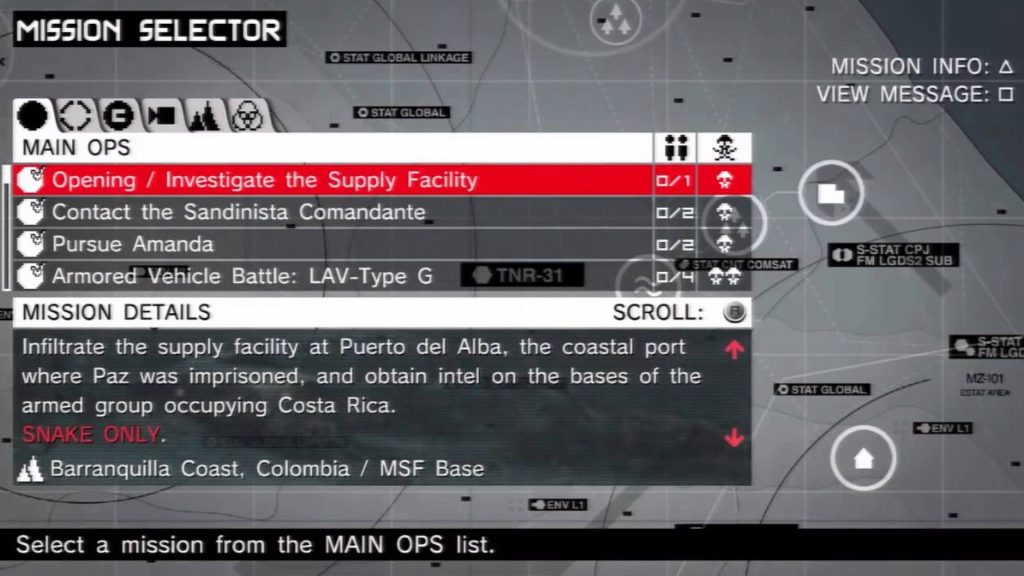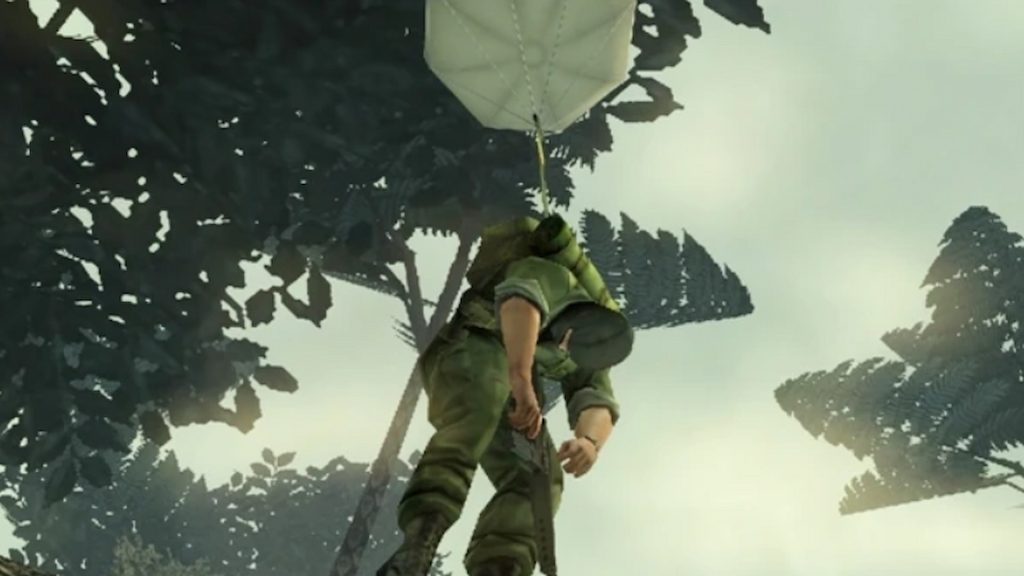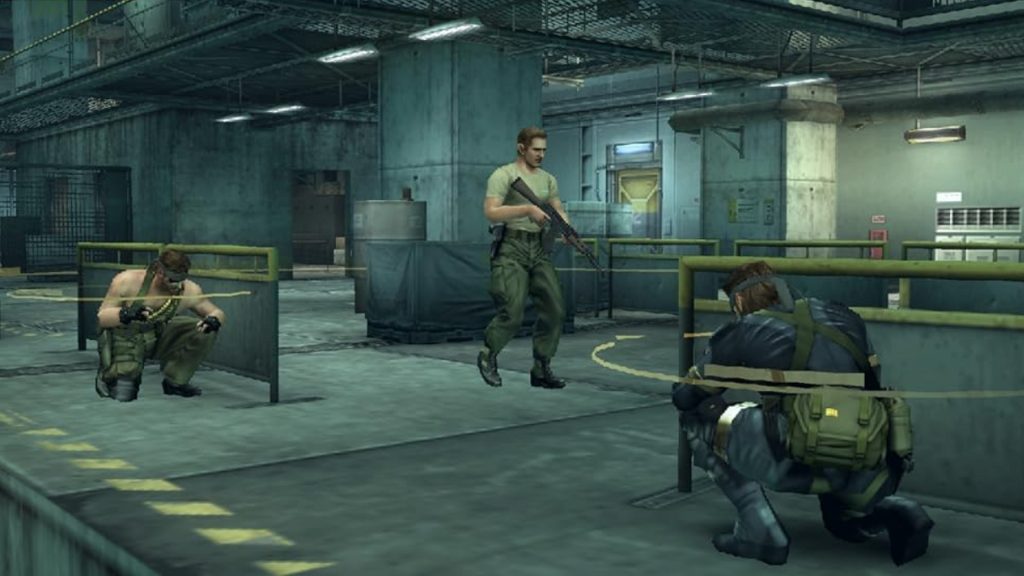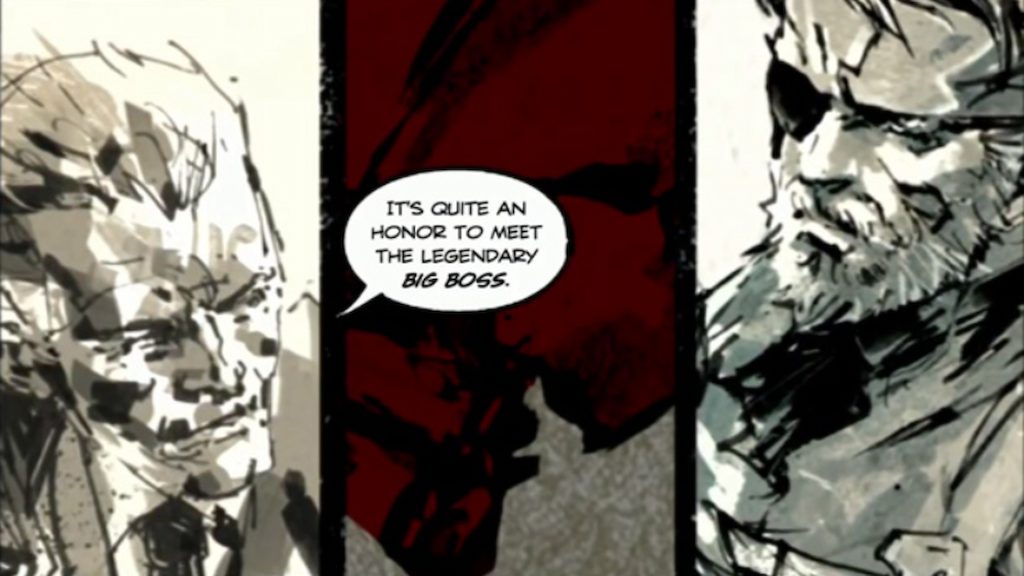Why Metal Gear Solid: Peace Walker is Still Worth Playing 15 Years Later
In a way, Peace Walker is a kind of proto Phantom Pain. It walked (pardon the pun) so that Phantom Pain could run, functioning as a stepping stone of sorts for the ambitious open-ended stealth title. But Peace Walker shouldn’t just be thought of as a shadow of more substantive games. It’s a mainline Metal Gear Solid game through and through despite its PSP side game identity. But there’s much more to Peace Walker than its identity in the series; it’s also just such a zany and fun game to play, with tons of content to sift through. Here’s why Peace Walker was secretly one of the very best games in the Metal Gear Solid franchise.
One of the things that distinguishes Peace Walker from other games in the series is its design around portability. Sure, you can play Peace Walker HD just fine on PS3 (and presumably the upcoming Master Collection Vol 2) , but it was built to accommodate the short PSP battery life. The solution? A bite-sized mission structure extending to to nearly every corner of the game. One of the advantages of compartmentalizing missions is it avoids the 30 minute cutscenes that MGS4 was notorious for.
In fact, the story-heavy Main Ops missions can be completed in a lean 15 hours or so when ignoring the ludicrous amounts of side content. Of course, to unlock the true ending, quite a lot of work is required. This is where the several Extra Ops missions come in. Some of the most varied gameplay in the series can be found in these side missions. Within these missions, you’ll find yourself engaging in traditional stealth infiltrations, blowing up enemy cargo, destroying a wide array of mechs, and capturing soldiers to work on your own base, but more on that later. Each mission ranks you based on performance, with S rank being the highest, and let me tell you, that’s reserved for the ultra-hardcore MGS fans.

Perhaps out of all MGS games, Peace Walker tried emphasizing pacifist stealth-oriented solutions to missions over the guns-blazing route the most. This is because the game penalizes players for lethally taking out enemies and being discovered. It’s far more rewarding to ghost your way through as many missions as possible, setting up a lofty challenge for seasoned MGS players. Rounding out the impressive amounts of replayability that Peace Walker offers are the substantive Mother Base mode and multiplayer offerings. Taken as a whole, Peace Walker may just be the most jam-packed full of gameplay content out of any MGS game, especially for completionists who want to see everything the game has to offer.
Many players assume MGS5 originated the base building concept in the series, but nope, Peace Walker had its own fully-fledged Mother Base mode five years before Phantom Pain did it (although Peace Walker built on Portable Ops recruitment mechanics). The cool thing about managing Mother Base is how it’s tied into Peace Walker’s missions. Snake has a Fulton parachute that transports defeated soldiers to the Mother Base where they can be put to work on a variety of projects. It’s just so much fun tying soldiers up and seeing them fly up through indoor areas as they scream.

These units have specializations and ranks and help manage Mother Base by researching new weapons for Snake to use in missions. They even go on Outer Ops missions (which by the way, are way better than the ones found in The Phantom Pain) and feed soldiers as part of a mess hall crew. There’s certain VIP characters that can be recruited too, such as Paz, who has maxed intel stats, of course. And for you mech lovers out there, the Metal Gear, codenamed ZEKE, can be developed through Mother Base. Fans who had fun with the base building in Phantom Pain owe it to themselves to play Peace Walker, if only for the Mother Base stuff alone.
Another thing most players forget is that Peace Walker’s campaign is almost entirely playable co-op. In fact, it almost seems like Peace Walker was structured as a co-op game first and foremost considering the padded health on most boss enemies, especially within late-game sections. Playing these tough missions with a co-op partner via the Co Ops mode really alleviates some of the grind and frustration that some bosses exhibit. And then there’s Versus Ops, which pits six players against each other in death matches and capture challenges. The cool thing is that the unlocked weapons and items from single-player can be used in PvP matches as well.

With the versatile Mother Base content, 100s of missions, and a co-op campaign and PvP modes, Peace Walker is absolutely teeming with gameplay variety. Which brings up the question: why the heck isn’t it give more love like a mainline Metal Gear Solid game? Well, obviously, it originating on the PSP has something to do with its diminished reputation. But does it really deserve it? Well, even according to the developers, Peace Walker is among the biggest games the team had worked on back then. It’s been said the staff for Peace Walker rivaled that of MGS4’s development.
Peace Walker provides crucial context for why Snake is so jaded and weary. The game takes place 10 years after the events of Snake Eater showing crucial flashbacks of him facing off against The Boss and some internal monologue details that help flesh out Snake’s transition between games. Aside from all the crucial character arc stuff, Yoji Shinkawa’s character design and Ashley Wood’s illustrations are just fantastic throughout the Main Ops missions. A majority of the cutscenes are done in a comic strip fashion, featuring the series’ iconic art. Contrasting the lengthy cutscenes seen in MGS4 are interactable quick time events that engage the player through the lean story. Say what you want about QTEs, but their pairing with the fantastic hand-drawn artwork provides a breath of fresh air coming from MGS4’s cinematic approach.

But Peace Walker does take several elements from MGS4, most notably in the gameplay department. For example, the game feels much smoother to play than MGS3. The crouch walking and moving around while aiming down the sights substantially reduces the jank and limited movement of previous entries. But above all, Peace Walker just feels like a tried and true Metal Gear game like all of the numbered entries do. It has all the quirkiness, convoluted story identity, and wide array of series that characterize these beloved games. As mentioned earlier, you build your own Metal Gear. Heck, not even The Phantom Pain featured such a gameplay mechanic despite being advanced not only in gameplay mechanics but also technology wise. It’s clear that a lot of love and passion was poured into this project.
Monster Hunter fans have a lot to gush over too, as there’s an entire island dedicated to taking down a Ratholos and Tigrex. Monster Hunter’s own Trenya even flies Snake to the island, though you’d best come prepared since these iconic monsters have a ton of health. Another fun secret is tucked in one of the Extra Ops missions. One of these missions features a spot where Snake can perform an Assassin’s Creed inspired ‘leap of faith’ into a hay pile before using the hay as a disguise. Peace Walker has such a wide array of fun secrets that it’d take another video just to list them all.
[embedded content]
I may dislike all the equipment grind and bloated boss health that exists within Peace Walker, but it cannot be denied how much substantive content is packed into the package. In the past, the development team has expressed just how big the production for Peace Walker is. Not to mention its realization of Snake’s character arc following the events of Snake Eater fill in a crucial spot in the timeline. Peace Walker is a a fantastic MGS game and its gameplay perks are worth going through a bit of grind for.
Note: The views expressed in this article are those of the author and do not necessarily represent the views of, and should not be attributed to, GamingBolt as an organization.


Comments are closed.